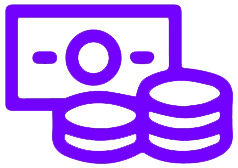What is Predictive Analytics?
Predictive analytics is a powerful data-driven approach that uses historical data, machine learning algorithms, and statistical techniques to forecast future events and trends. Businesses leverage predictive analytics to make more informed decisions, anticipate customer behaviors, and optimize strategies across various operations, including marketing, sales, and customer support.
How Does Predictive Analytics Work?
Predictive analytics involves analyzing large datasets to identify patterns and correlations that can be used to predict future outcomes. By using advanced algorithms and statistical models, predictive analytics tools can uncover trends and insights that help businesses forecast customer behaviors, operational risks, and market dynamics.
The process typically begins with collecting historical data from various sources such as customer interactions, purchase history, web behavior, or social media activity. Machine learning models and algorithms are then applied to this data to make predictions about future outcomes, whether it's predicting customer churn, demand for products, or the likelihood of a particular event.
Key Features of Predictive Analytics:
- Data Collection and Preparation: The first step is gathering relevant historical data, which is then cleaned and organized for analysis.
- Machine Learning Models: Predictive models are built using techniques like regression analysis, decision trees, neural networks, and other machine learning methods to identify patterns in the data.
- Forecasting and Predictions: Once the models are trained, they can predict future events such as customer churn, sales trends, or equipment failures.
- Real-time Insights: Modern predictive analytics platforms offer real-time insights, allowing businesses to make decisions and adjust strategies quickly based on current trends.
Benefits of Predictive Analytics:
- Improved Decision-Making: Predictive analytics enables businesses to base decisions on data-driven insights, reducing guesswork and improving outcomes.
- Personalized Customer Experiences: Companies can predict customer behaviors, preferences, and needs, allowing them to offer personalized recommendations, promotions, or services that improve engagement and satisfaction.
- Risk Management: Businesses can identify potential risks, such as equipment failures or financial fraud, before they occur, allowing for proactive measures to be taken.
- Increased Efficiency: Predictive analytics helps optimize resource allocation, whether it's predicting staffing needs or managing supply chain logistics more effectively.
- Enhanced Marketing and Sales Strategies: By predicting customer behavior, companies can create more targeted and effective marketing campaigns, resulting in higher conversion rates and ROI.
Examples of Predictive Analytics in Action:
- Customer Churn Prediction: Businesses can analyze customer behavior to predict when they are likely to stop using a product or service, enabling proactive measures to retain them.
- Demand Forecasting: Retailers can use predictive analytics to anticipate product demand, helping them optimize inventory management and avoid overstock or stockout situations.
- Fraud Detection: Financial institutions use predictive analytics to detect unusual transaction patterns that may indicate fraudulent activity, allowing for early intervention.
- Marketing Campaign Optimization: Predictive analytics tools help marketers predict which customers are most likely to respond to a campaign, enabling them to allocate resources more efficiently.
How Predictive Analytics Enhances Business Operations:
- Customer Support Optimization: Predictive analytics can be used to forecast the volume of support inquiries and help companies allocate resources effectively to handle customer demand without delays.
- Sales Forecasting: Sales teams can use predictive analytics to anticipate future revenue streams, enabling better quota setting, resource planning, and sales strategies.
- Supply Chain Optimization: Predictive models can analyze historical sales and shipping data to predict future demand, ensuring that inventory is managed efficiently and disruptions are minimized.
Industries Using Predictive Analytics:
- Retail: To forecast sales trends, optimize inventory, and personalize the shopping experience.
- Healthcare: For predicting patient outcomes, managing resources, and improving treatment plans.
- Finance: To predict credit risks, detect fraud, and optimize investment strategies.
- Telecommunications: For predicting customer churn, enhancing network performance, and delivering personalized offers.
- Manufacturing: To predict equipment failures and optimize maintenance schedules, reducing downtime.
Why Predictive Analytics Matters:
Predictive analytics is essential for businesses seeking to gain a competitive edge. By accurately forecasting future trends and behaviors, companies can proactively adjust strategies to improve customer experiences, optimize operations, and increase profitability. With the growing availability of big data and advanced AI technologies, predictive analytics has become an indispensable tool across industries.
Conclusion:
Predictive analytics allows businesses to harness the power of data to predict future outcomes, enabling smarter decisions and more efficient operations. From marketing and sales to risk management and customer support, predictive analytics empowers organizations to anticipate challenges, optimize processes, and unlock new opportunities for growth.






